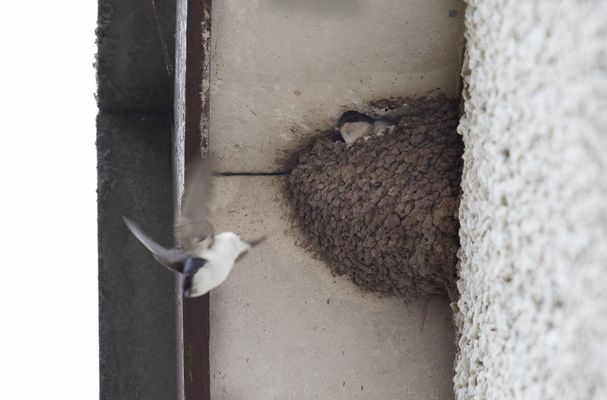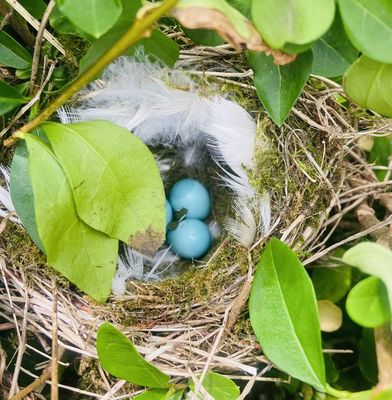WHY are some birds more nervous than others? Some, like the thrushes Dúlra watched this week, seem to be absolutely terrified.
Of course they face countless threats. But the redwings that touched down in the garden were afraid of their own shadow. If you just blinked your eyes from the window, they’d take off screeching and disappear like missiles over the horizon. You couldn’t make out where they eventually landed, but it had to be miles away.
Across northern Europe the redwing – deargán sneachta or red bird of the snow in Irish – is as common as our blackbird and faces no particular persecution. Other migrants, like the beautiful waxwing, aren’t nearly so jumpy. In fact, because they see so few people in the cold north, they are even tamer than our native birds.
Amazingly, we recorded a Redwing in song today, in North Cork. Redwing are a northern thrush with the bulk of our birds coming from Scandinavia for the winter, so, to hear one singing in Ireland is not at all common. @Dodotronic @WildlifeSound @SoundApproachUK @BirdWatchIE pic.twitter.com/7bLDPx1ImH
— Irish Wildlife Sounds (@SoundsIrish) January 20, 2021
Redwings arrive here in their tens of thousands every winter, but few readers will have seen them. Because these birds are in a desperate battle for life.
And that’s why they seem so nervous. It’s not that they are terrified of people, it’s just that they are terrified of dying.
The only thing coming between them and death are berries, mainly from hawthorn, rowan and holly trees. The birds that arrived in Belfast when the cold snap hit this month had already raced through Europe and across England or Scotland, trying to stay ahead of all those other migrants that will strip those same berries.
This week a reader sent Dúlra a video of a flock of redwings feeding feverishly on garden trees in Glengormley. There was no decorum – they just manically stripped each tree before the flock of a dozen birds headed on. And like all redwings, they come from the direction of the northeast and always head south.
The trees in the Glengormley gardens were old hawthorns which would have once been a hedgerow which survived the building of the houses. But the hedgerows that sustained redwings for millennia have all but vanished in the last few years.
And that, for Dúlra, is one of the reasons why these birds are so alarmed. They have arrived here after travelling hundreds of miles over land and sea and found a scorched land. And they know that Ireland is their final destination because they won’t be able to head back to Europe until spring and there is no land beyond us that they can reach.
And so they face a food shortage that we have caused by trimming all those ancient field borders into privet-like hedges.
Hawthorns are wild, unkempt native trees that are synonymous with Irish hedgerows. Or at least were. In the whole of County Antrim you’ll barely find a single tree which has been allowed to grow tall enough to offer up those famous haw berries.
Our food can never compete with what nature offers.
Dúlra throws out a couple of cut apples into the garden every day but they don’t last long. Unlike our resident garden birds, none of the migrants hang around. They eat until the food runs out and then immediately head south.
They can’t take the risk of waiting as it could be fatal.
Dúlra went for a dander along Belfast Lough this week and was delighted that at least here many migrants are able to enjoy themselves. All the birds were at their ease in the winter sunshine, searching out food in the shallow water. It was only when you stared or used the binoculars that you realised how many there were, often disguised against the pebbles and rocks.
The brent geese, cadhan in Irish, had flown perhaps 5,000km to get here, but looked like they’d just stepped off a plane on their holidays.
These black and white geese come from the Canadian Arctic. That cold snap we suffered earlier this month was just a slight temperature dip for these birds for whom our winter is their summer.
A total of 30,000 of them arrive together at Strangford Lough every October, where they refuel before fanning out to lakes and estuaries all around Ireland. And when they gobble up all the seagrass, they’ll take to grazing our football pitches and parkland.
So unlike the nervous redwing, we all get a chance to enjoy their company.
- If you’ve seen or photographed anything interesting, or have any nature questions, you can text Dúlra on 07801 414804.





